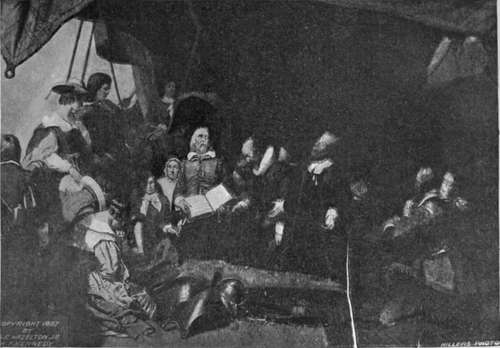The Embarkation Of The Pilgrims
Description
This section is from the book "The National Capitol. Its Architecture Art And History", by George C. Hazelton, Jr. Also available from Amazon: The National Capitol Its Architecture Art and History.
The Embarkation Of The Pilgrims
The Embarkation of the Pilgrims by Robert Weir affects us with something of the same incongruity which we feel upon reading the words of one of the Pilgrims at starting: " We sang psalms and were merry." The picture is gloomy, hard and uninteresting, but commands the respect of the general public because of its deep religious spirit, and of critics because of the clever handling of some of the painting in shadow, its general conscientiousness and, in places, its admirable technique. It represents the Speedwell on July 22, 1620, just before she set sail from Delft Haven for Southampton, to be joined by the Mayflower. The Pilgrims had fled from Scrooby, England, in 1608; and now, after years of toil in Holland, they are about to seek yet another home, where they may worship God as they will. The Speedwell, however, did not reach America. She was found to be utterly unseaworthy j and at Plymouth, England, as many of her passengers as possible were transferred to the Mayflower, which then, late in September, set sail alone for the New World.

THE EMBARKATION OF THE PILGRIMS.
Continue to:
